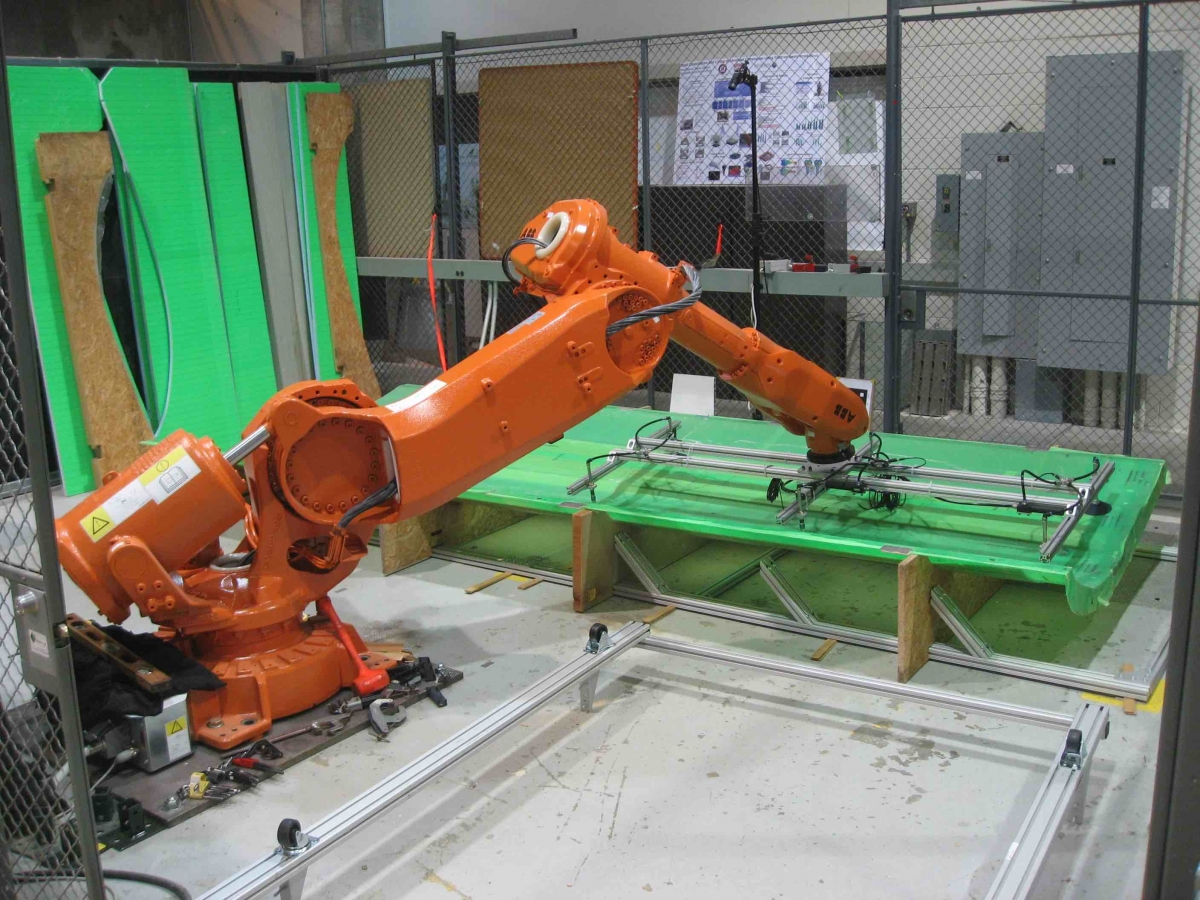This project will develop an operator-guided semi-automatic assembly process using industrial robots integrated with multiple sensors. The goal of the project will be to improve manufacturing productivity by enhancing the operator’s capabilities though advanced robotics, and appropriately applying the technologies that capitalize on the strengths of the robotics (e.g. precise manipulation) and the operator (e.g. decision-making). Our objective will be to demonstrate efficient placement and alignment of large, flexible composite panels without relying on either hard tooling (as has been shown) or alternatively, a highly-skilled operator to achieve the tight-tolerance alignment needed. Instead, we seek to integrate robotics and sensor intelligence that will enable an operator of moderate skill to be productive quickly and perform his operations consistently throughout the day. The operator will direct the transition between process steps using shared and supervisory control; adaptive and learning control will reduce laminate vibration during motion; vision sensing will guide robot motion based on operator direction and alignment requirement; force sensing will guide placement and assembly. The project will also develop a graphical simulation environment for the operator interface, process preview, and training. The operator interface will focus on providing him with data and actionable information about the assembly process in a clear and unambiguous manner so as to enhance his abilities and improve his productivity and safety. Workforce Development team members will be consulted to assess training implications associated with the operator interface.
Project Video: https://youtu.be/UXPGR899tc4
Robot Assistant for Composites Manufacturing
Advanced Robotics for Manufacturing (ARM) Institute
John Wen
Glenn Saunders, Richard Radke, Jeff Trinkle, Dan Walczyk
Regional Robotic Innovation Collaborative (RRIC) of the Advanced Robotics for Manufacturing (ARM) Institute
New York State Empire State Development (ESD) Division on Science, Technology, and Innovation (NYSTAR)
John Wen
This project aims to develop a fixture-less robotic assembly system that will decrease the process cycle time, decrease process setup cost, improve alignment precision, and simplify the process design by incorporating vision and force feedback. The project will not only impact composites manufacturing, but also be applicable to aerospace, automotive, heavy, and textile industries which could involve manipulation of large, heavy, and flexible component parts. The technical portion of the project contain four key aspects: 1. Multi-camera guided pick-up of composite laminate panels and alignment (Phase 1); 2. Graphical user interface to allow the operator to simulate and command robot operations (Phase 1); 3. Robot trajectory generation avoiding excitation of relatively low natural frequencies due to structural flexibility (Phase 2); 4. Force guided placement of the flexible panel avoiding high impact force and panel warpage (Phase 2). The performance of the system will be evaluated based on process cycle time and assembly accuracy, and, for Phase 2, magnitude of panel vibration during transport and impact force during placement.





